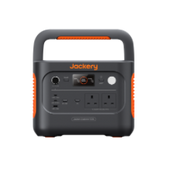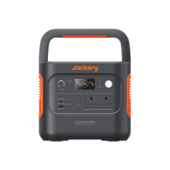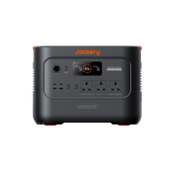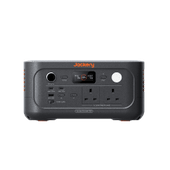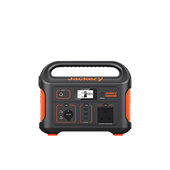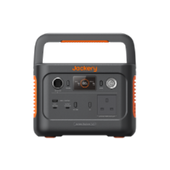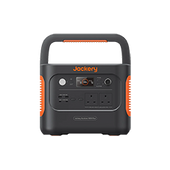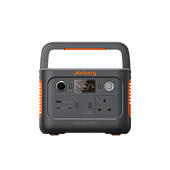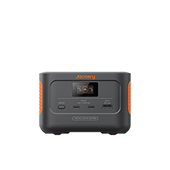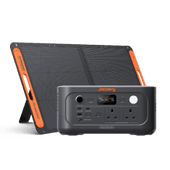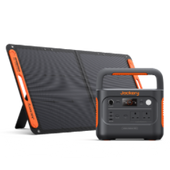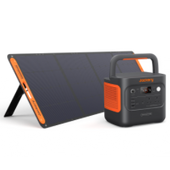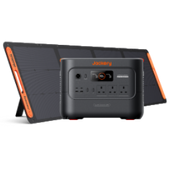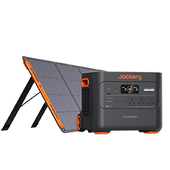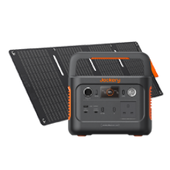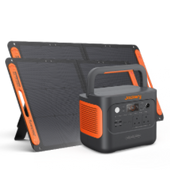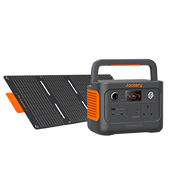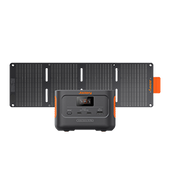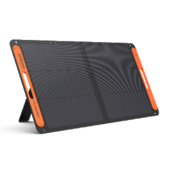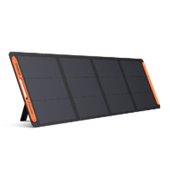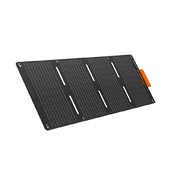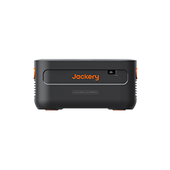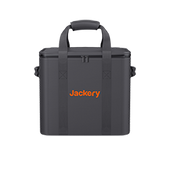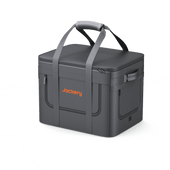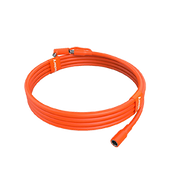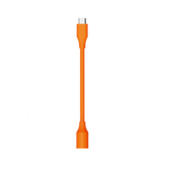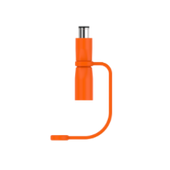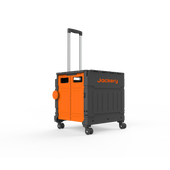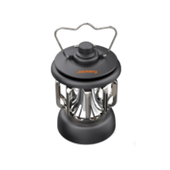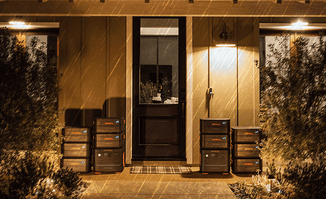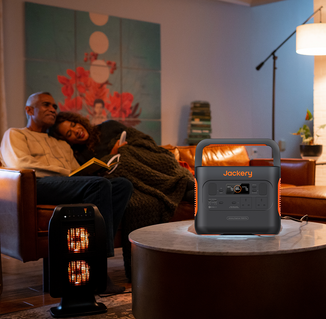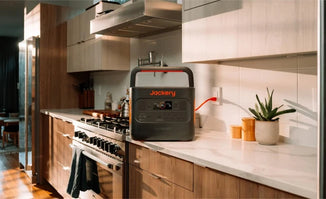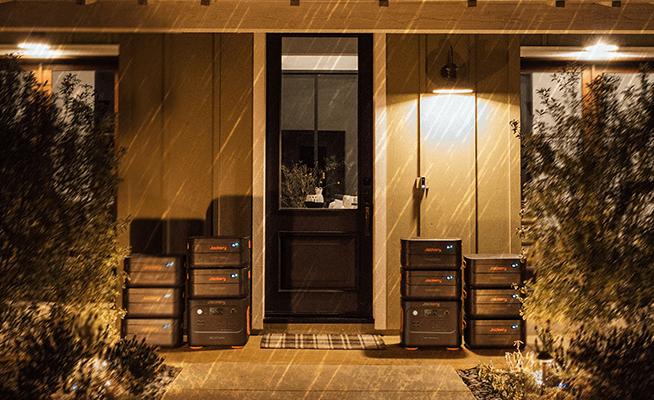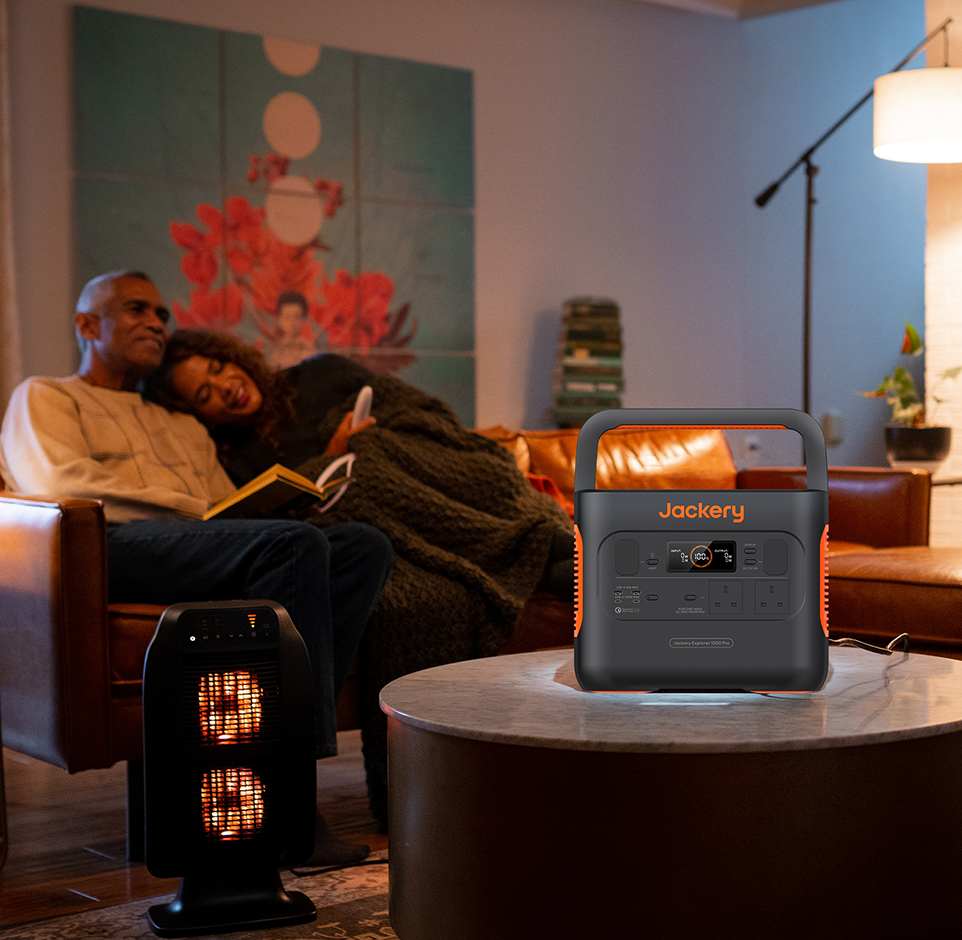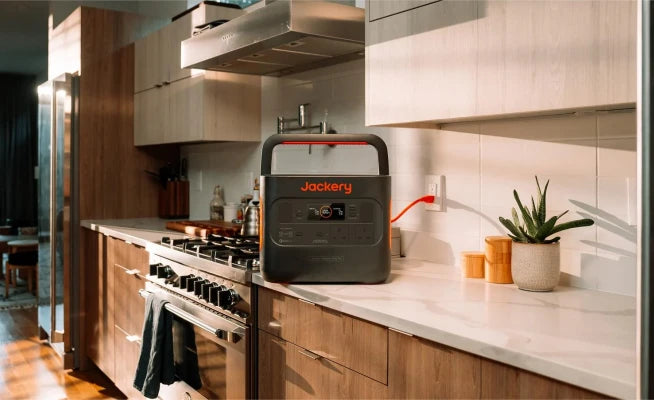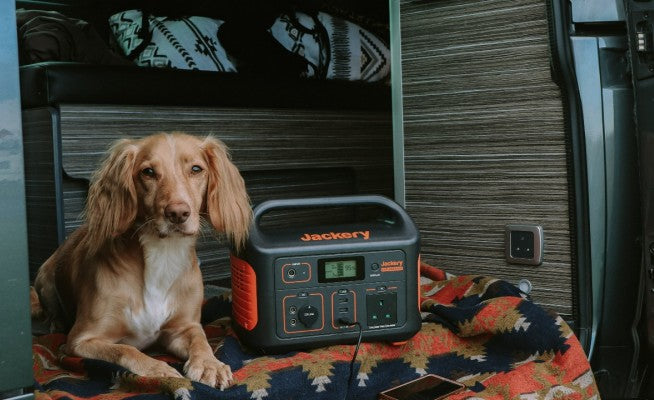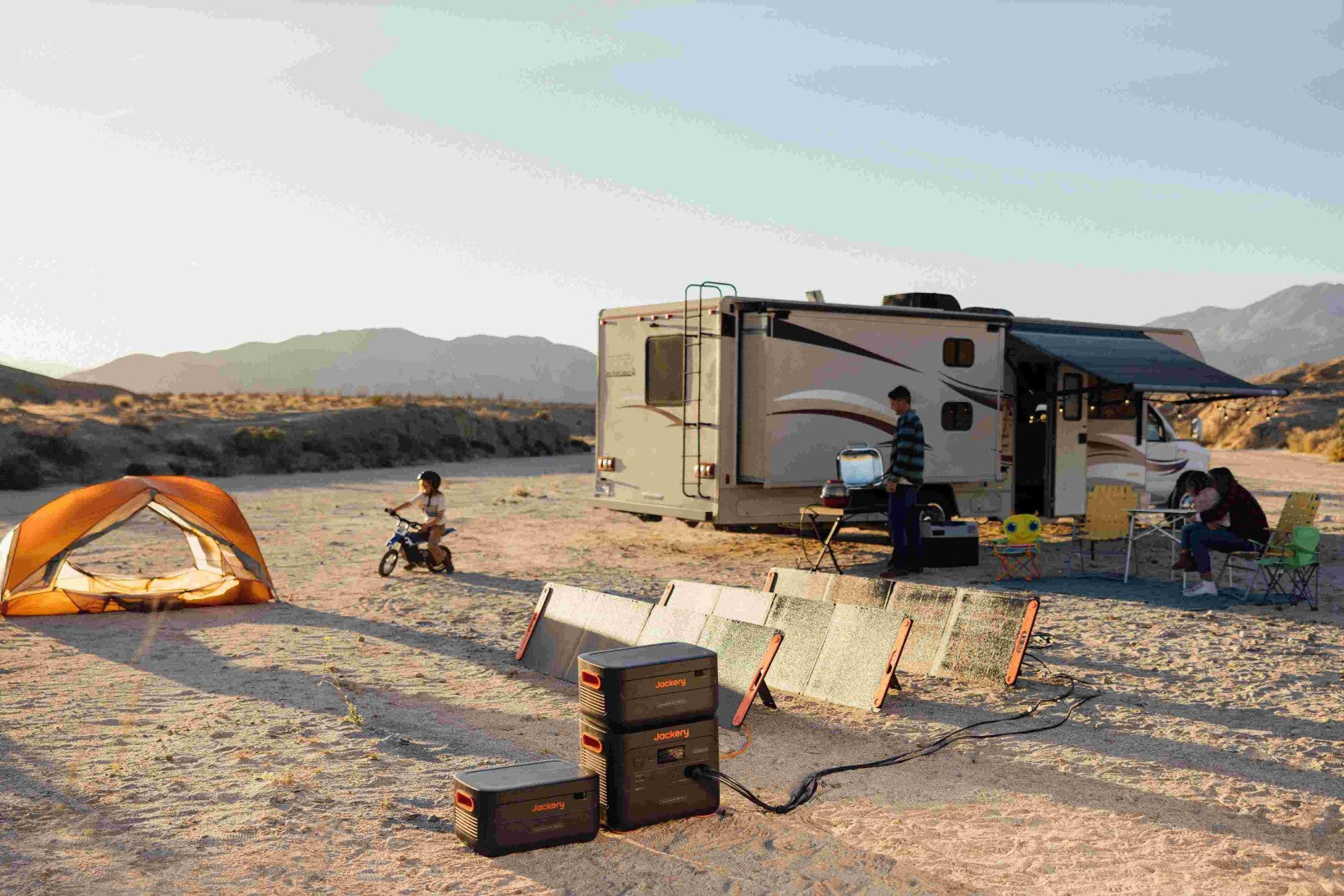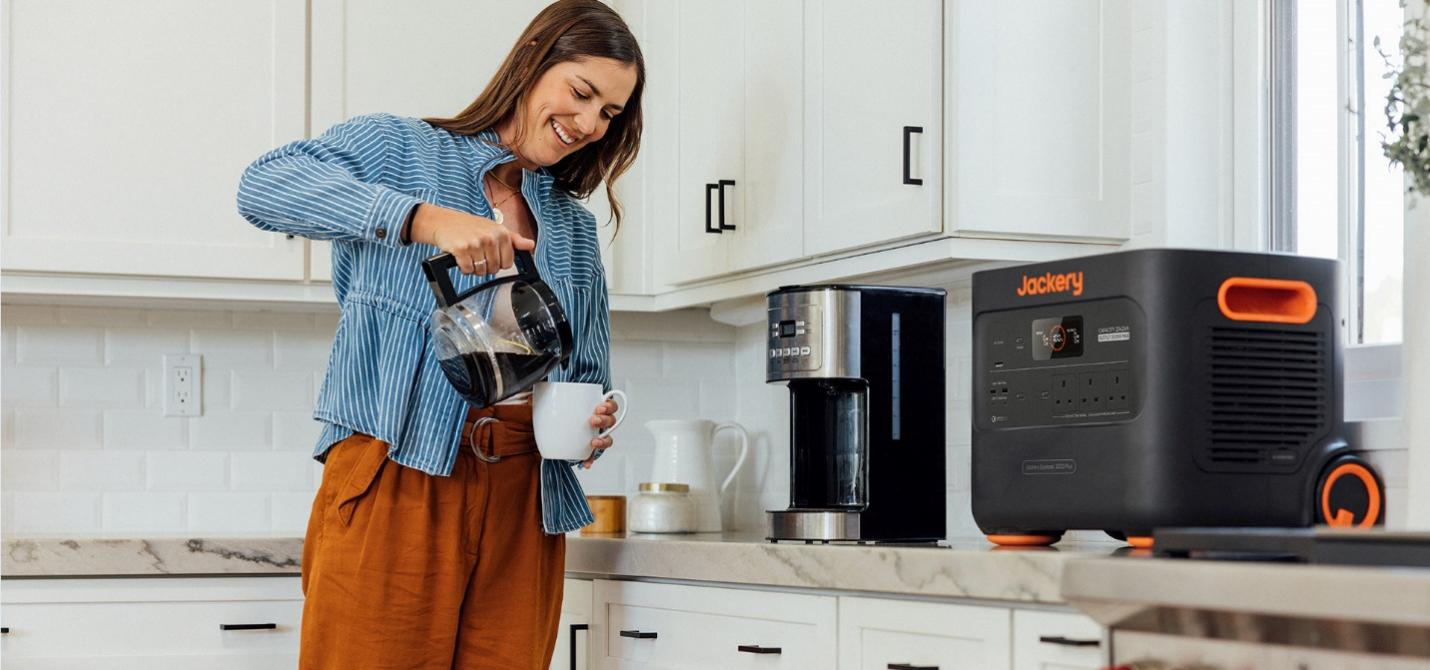The popularity of solar power systems continues to grow, not entirely due to rising energy prices but also partly because they can produce clean, renewable energy. However, many people often ask, "Can I install a solar power system myself?" While it is possible, there are also many disadvantages to DIY or "do it yourself" solar power system installation that cannot be ignored.
In short, DIY solar power system installation may be more complicated than you think. The following will focus on a DIY solar power system guide to provide more relevant information. Moreover, we highly recommend Jackery Solar Generator, a portable solar power system, if you think the rooftop solar system is complex to install and costly.
|
Key Takeaways: |
|
- A DIY solar power system allows individuals to design, assemble, and maintain it. - DIY solar power system installation is usually wholly legal in most areas of the UK. - DIY solar power system involves multiple technical links, which are exceptionally technically difficult for ordinary people. - The total cost of a 2—to 6-kW DIY solar power system may be between 4,700 and 30,500 pounds. - Detailed steps for DIY installation of solar power systems in the UK. - We highly recommend Jackery Solar Generator 2000 Plus and 2000 v2 as portable solar power systems to power your appliances indoors and outdoors. |
What Is a DIY Solar Power System?
A DIY solar power system, also known as a DIY solar kit, is a solar power generation device that individuals can design, assemble, and maintain. It uses solar energy to provide electricity for homes or specific devices.
This DIY project usually involves assembling and connecting individual solar cells to create a fully functional solar power generation system.
Composition of DIY Solar Power System
A basic DIY solar power system mainly includes the following parts:
Solar panels
Solar controller
Battery (optional)
Inverter
Mounting bracket
Other components (such as cables)
Advantages of DIY Solar Power System
DIY solar power systems are environmentally friendly and reduce electricity bills. It is a more reliable power solution, especially in unstable power grids. The following are the advantages of a DIY solar power system:
Cost savings (labour and material costs)
Customisation (such as customised solar panel arrays)
Improve technical skills (from wiring to understanding energy efficiency)
Reduce carbon footprint
In short, a DIY solar power system allows you to learn the technical principles of solar power generation and experience green energy's convenience and environmental benefits.

Is a DIY Solar Power System Legal in the UK?
In the UK, installing solar power systems is becoming increasingly common, and many families are considering do-it-yourself (DIY) installation to save costs. So, is installing a solar power system by yourself in the UK legal? The following will focus on whether DIY solar power systems are legal in the UK.
The UK government has recently encouraged households and businesses to install renewable energy equipment, such as solar power systems. Therefore, in the UK, the DIY installation of solar power systems is usually wholly legal. In most parts of the UK, no laws prohibit DIY installation of solar power systems. For example, small systems (such as solar power systems with an installed capacity of no more than 4 kilowatts) are generally regarded as "permitted development", and no separate application for planning permission is required.
However, in some areas of the UK (such as conservation areas), planning permission may be required to install a solar power system. Therefore, confirming the specific requirements or restrictions with the local government before installation is best.
Additional Regulations to Comply with
Although the DIY installation of solar power systems is legal, it must meet a series of safety and technical standards and pass the corresponding certification and inspection.
Building Regulations: When installing a solar power system, it must comply with local building regulations, especially regarding roof structure and safety standards. The roof must be able to support the weight of the solar panels. (If necessary, reinforce the roof before installation.) To ensure all work meets the standards, it is recommended that individuals unfamiliar with these regulations hire a professional, certified installer.
Electrical Safety: DIY installers must have relevant electrical knowledge and skills or hire qualified professionals to perform the connection work to ensure that specific requirements of electrical safety standards are met. After the installation, electrical safety certification, such as MCS certification, is usually required.
What Difficulties Does a DIY Solar Power System Face in the UK?
DIY solar power systems seem an attractive way to use renewable energy cheaply. However, DIY solar power system installation faces challenges, such as selecting components and matching installation and maintenance. The following are some of the main difficulties faced by DIY solar power systems:

Technical Complexity
DIY solar power systems involve multiple technical links, including installing solar panels, configuring inverters, integrating battery energy storage systems, etc. For ordinary people who do not have professional knowledge, this technical knowledge is relatively complex and requires a lot of time and effort to learn. In addition, the system design needs to be personalised according to the actual power demand and roof conditions of the family, which also increases the difficulty of DIY.
Safety Risks
DIY solar power systems will likely fail inspection, violate local regulations, or cause electrical hazards. The most significant risk is fire caused by using the wrong materials or improper installation. In addition, a DIY solar power system requires installing heavy panels, connecting electrical equipment, and simply working high on the roof.
Not eligible for government incentive programs.
DIY solar power systems in the UK are generally not eligible for most government incentive programs. For example, most energy suppliers will require your solar power system to be MCS-certified to be eligible for SEG benefits.
Lack of Warranty
Professional installation usually comes with a warranty and other after-sales services for the solar power system. If homeowners choose a DIY solar power system, they risk not being able to obtain a labour warranty and will most likely need to bear any repair or replacement costs alone if problems arise.
Difficulty in Grid Connection
To connect a DIY solar power system to the national grid, you must meet technical standards and regulations (such as the system's safety, reliability, compatibility with the grid, etc.). Residents must apply to the local power company and undergo a rigorous review and acceptance process, which may require additional fees.
A Step-by-Step Guide to a DIY Solar Power System
Here are the detailed steps for installing a solar power system in the UK DIY.

Step 1: Preparation Before Installing a Solar Power System
Before you start installing a solar power system, you need to assess several factors:
Energy Needs: Make sure the roof structure can support the weight of the solar panels and have a professional assess it if necessary. A south-facing roof with a 3kW to 4kW solar power system.
House Conditions: Ensure the roof structure can support the weight of the solar panels and have a professional assess it if necessary. For best results, a south-facing roof with a 30—to 45-degree angle is ideal.
Components of a Solar Power System: You can buy a kit or purchase the components individually for a DIY solar power system. Kits are easier to install, but buying the components in batches may be cheaper.
Installation Tools: Here are the tools you may need to install a DIY solar power system:
|
Tool List for DIY Solar Power System Installation |
|
|
Cordless drill Impact driver Socket tool set Sealing gun Angle gauge Wire strippers and crimpers Level and measuring tape |
Multimeter Ladder Safety belt Hard hat Gloves Goggles |
Step 2: Install the Brackets for the Solar Panels
First, you need to fix the rails to the brackets for the solar panels. Then, securely mount the mounting system based on the roof type and panel size, ensuring that any bolts or holes are drilled with caulk or filler. Proper spacing and alignment are critical to the energy production of solar panels.
Step 3: Mount the Panels
Once the mountings are installed, it's time to secure the panels. Use the correct screws and tools to align the mountings with the panel's mounting holes to ensure a secure fit (as well as orientation and tilt angle). Connect the panel's positive and negative wires, paying attention to polarity to provide the current flows correctly.
Then, connect multiple panels in series or parallel, and connect the wires to the charge controller, inverter, and energy storage battery (if any).
Step 4: Install the Inverter and Battery Energy Storage System
Please choose a well-ventilated area out of direct sunlight to install the inverter and connect it to the solar panels and the property's electrical system. The inverter's wires must pass through the junction box and circuit breaker.
In addition, if necessary, install the battery energy storage system according to the manufacturer's instructions and connect it to the inverter and the property's electrical system.
Step 5: System Testing
Before officially using it, please conduct a comprehensive test to ensure all solar power system components (solar panels, inverters, etc.) work correctly. In addition, you can install solar power system monitoring equipment to monitor the system's operation and power generation in real-time.
Following the above steps, you can successfully install a solar power system and provide green and economical electricity for your home. Please note that the above DIY solar power system installation is a brief overview. If you want more explicit details, please consult a professional. However, regarding electrical engineering, please find a professional electrician to complete it and help confirm electrical safety in the final test.
How Much Does a DIY Solar Power System Cost in the UK?
DIY solar power systems are popular among many technology enthusiasts and environmental advocates for their cost-effectiveness and autonomy. The main costs of a DIY solar power system are the components and the time it takes to build it over a few days. Here is some basic information about the price of a DIY solar power system in the UK.
The Cost of Solar Panels
In the UK, a typical domestic solar power system may require a capacity of 2 to 6 kilowatts (kW), so the total cost of the panels may range from £2,500 to £10,500.
The Cost of Mounting Brackets
Mounting brackets fix solar panels to receive sunlight at the best angle and position. The cost of the bracket depends on its material (such as aluminium or stainless steel) and complexity. Generally speaking, a 2—to 6-kW solar power system may cost between £600 and £2,500.
The Cost of Inverter
The price of an inverter varies depending on its type (such as string inverter or micro inverter) and power. Typically, for a 2-6 kW solar power system, an inverter might cost between £1,000 and £3,000.
The Cost of Electrical Works
Electrical work includes labour costs and the cost of cables, junction boxes, and other electrical components. Thus, the electrical work for a 3-5 kW solar power system might cost between £600 and £3,000.
The Cost of Batteries (optional)
The cost of a storage battery depends on its capacity and type (e.g., lithium-ion or lead-acid). For a 2-6 kW solar power system, a storage battery might cost between £2,000 and £10,000.
The Cost of Monitoring System (optional)
Monitoring systems track a solar power system's performance and power generation, helping owners understand its performance. Depending on their features and brand, such systems can cost from a few hundred pounds to thousands of pounds (£500–1,500).
|
Cost Breakdown |
Average Cost Range (£) |
|
Solar Panels |
£2,500 - £10,500 |
|
Mounting Systems and Racking |
£600 - £2,500 |
|
Inverters |
£1,000 - £3,000 |
|
Electrical Work |
£600 - £3,000 |
|
Energy Storage Systems / Solar Batteries |
£2,000 - £10,000 |
|
Monitoring Systems (Optional) |
£500 - £1,500 |
(Data Source: whatcost.co.uk)
A 2—to 6-kW DIY solar power system could cost between £4,700 and £30,500. However, the above figures are estimates for reference only. The cost depends on several factors, including the size, quality, and type of components required.
Jackery Solar Generators Explained
Compared to the DIY solar power system, which costs from £4,000 to over £30,000, the portable solar power system could be a wise choice since it only costs half of the DIYs or even lower.
Solar generators have many benefits. For environmentally aware users, they are essential since they produce clean electricity without emitting the same pollutants as traditional gas or diesel generators. Once they are up and running, they have very low operational costs. Fuel doesn't need to be purchased, and because they have fewer moving parts, they typically require less maintenance.

We recommend Jackery Solar Generators, which combines Jackery Solar Panels with Portable Power Stations to create a portable solar set. Jackery offers portable power solutions ranging from 99W to 12 kWh, capable of powering up to 99% of appliances, including washing machines, refrigerators, microwaves, etc.
Also, the Jackery Portable Power Stations are compact and easy to carry, so you can put them everywhere in your home or on your outings. Compared to gas or other traditional generators, they are safer to use, and you can even use them while sleeping.
Jackery Solar Generator 2000 v2
Jackery Solar Generator 2000 v2 combines Explorer 2000 v2 portable power station and SolarSaga 200W solar panel. It has a 2042Wh capacity and a 2200W power output, enough to power most appliances at home or outdoors during camping, RVing, and off-grid living.

(*The working hours are only for reference; the actual working hours depend on your usage.)
Jackery Explorer 2000 v2 Portable Power Station:
With its remarkable 2042Wh capacity and 2200W output, the Jackery Explorer Portable Power Station 2000 v2 can power most home appliances. Additionally, it has two AC outlets, one USB-A 18W connector, and two USB-C ports (100W + 30W), enabling you to charge numerous devices simultaneously, including laptops and phones.
At approximately 38.6 lbs or roughly the weight of a suitcase, it is the first 2kWh LiFePO4 power station in the world with cutting-edge EV-grade CTB (Cell to Body) Structure technology⁵. It is the ideal power source for camping, road trips, and off-grid life, and it has a collapsable handle for convenient carrying.
The CTB structure allows for a compact, potent design, increasing space efficiency to 59%. Its 13.2 × 10.4 × 11.5-inch size, similar to a medium printer, makes it easy to fit in your car.
It has demonstrated resilience even in earthquakes up to 9 by passing the demanding IEC60068-3-3 seismic test. You may feel secure knowing it can manage bumps, falls, and challenging circumstances wherever you go because it is drop-resistant and built to withstand the unexpected.
Jackery SolarSaga 200W Solar Panel:
The Jackery SolarSaga 200W Solar Panel can increase solar conversion efficiency by up to 25%. It has a long-lasting ETFE-laminated case and adjustable tilt for optimal sunlight absorption. Ideal for home backup and outdoor excursions, this device is lightweight, foldable, and simple to connect to a power source.
Jackery Solar Generator 2000 Plus
Jackery has unveiled the Solar Generator 2000 Plus, a cutting-edge portable power solution with exceptional performance for off-grid living. Thanks to its substantial capacity and formidable power output, this device can sustain the operation of standard off-grid appliances for several weeks and fulfil all the power needs associated with outdoor adventure or professional activity.

(*The working hours are only for reference; the actual working hours depend on your usage.)
Jackery Explorer 2000 Plus Portable Power Station:
The Jackery Explorer 2000 Plus allows adding extra battery packs, which boosts the capacity from 2 kWh to a remarkable 12 kWh, thus significantly enhancing the solar charging capabilities. With the ability to be expanded to 3000W, this solar product offers a 30% higher rated power than other 2 kWh solar goods available in the market.
The Explorer 2000 Plus is an industry's pioneering add-on battery pack that can be recharged using solar panels. This feature enhances versatility, improves charging efficiency, and reduces charging time. The LiFePO4 battery, with its sophisticated technology, guarantees a lifespan of 10 years, even with daily usage limited to once per day. Jackery Solar Panels generate more energy over their lifespan due to their exceptional solar conversion efficiency, reaching up to 25%.
With six SolarSaga 200W solar panels, the Solar Generator 2000 Plus can be fully charged in about two hours. Using solar energy rather than the grid to charge, the power source becomes completely autonomous. You can also choose wall sockets or carports to recharge it for 1.7 hours and 25 hours.
Jackery SolarSaga 200W Solar Panel:
Go green fast with the Jackery SolarSaga 200W sunlight Panel's high sunlight conversion efficiency of up to 25%. It is the ideal power source for outdoor travel and home backup because of its ETFE-laminated case, which prolongs its lifespan, and the suggested angle, guaranteeing optimal sunlight absorption. For the perfect solar power system, it is collapsable, portable, and rapidly connects to a power station.
DIY Solar Power System VS Professional Installation
Many people face the following key questions when installing a solar power system: Should they do it themselves (DIY) or hire a professional? The following is a detailed analysis of several aspects of these two options to help them make a more suitable decision.
Technical Difficulty
Installing a solar power system involves multiple technical links, such as electrical connections, roof structure assessment, and system configuration.
DIY installation is undoubtedly a massive challenge for ordinary people unfamiliar with and without knowledge of electricians or construction. Incorrect installation may cause the system to malfunction and pose a safety hazard.
Professional installers have extensive practical experience, so they can accurately assess your roof conditions and ensure all components are installed and connected.
Cost Comparison
The most attractive aspect of DIY solar power system installation is the cost (labour cost) savings. However, you need to consider not only the cost of components but also the cost of tools, transportation, and additional materials that may be required.
Although hiring professional installers is more expensive, they can provide one-stop services, including system design, installation, commissioning, and after-sales maintenance. Professionals usually have long-term cooperation with suppliers and can obtain more favourable component prices.
The following table is the labour cost (estimate) of installing a solar power system in the UK:
|
System Size |
Estimated Labour Costs |
|
2 - 3kW |
£600 – £1,000 |
|
4 - 5kW |
£1,000 – £2,000 |
|
6kW |
£2,000 – £3,000 |
(Data Source: whatcost)
Safety
Safety (roof work and electrical operation) is an issue that cannot be ignored in DIY installation. Accidents can quickly happen if you are unfamiliar with the relevant safety regulations. In addition, unqualified installation may damage your house structure, affecting the value of the house and insurance claims.
Professionals are familiar with all safety standards and operating procedures during the installation of solar power systems and usually have corresponding insurance.
Long-term Benefits
Although DIY installation can save initial costs, it may not achieve the best results due to technical limitations and lack of experience. In addition, if the solar power system fails, you may need to spend more time and money to repair it.
Professionals can design the most optimised solar power system solution based on home electricity usage to ensure efficient and stable operation.
|
|
Advantages |
Disadvantages |
|
DIY Installation |
Cost savings Learn new skills Flexibility and customisation Personal satisfaction |
Technical barriers Safety risks High time and energy investment Lack of warranty and maintenance |
|
Professional Installation |
Professionalism and reliability Save time and energy Warranty and maintenance services Government subsidies |
High costs Difficult to choose |
In summary, although DIY solar power system installation is attractive in theory, hiring professionals is undoubtedly a wiser choice based on careful consideration of cost, technical difficulty, safety, and long-term benefits. However, if you have the relevant technical knowledge and experience and have enough time and energy, consider installing the solar power system yourself.
FAQs
The following are the frequently asked questions about the DIY solar power system in the UK:
1. Can you install your solar power system?
Yes. However, it is best to leave the installation to professionals to reduce the risk of accidents and maximise performance.
2. Can I legally install solar panels myself?
Yes, installing solar power systems in most DIY installations in the UK is completely legal and possible. However, some places (listed buildings and conservation areas) require approval and permission. Therefore, please check with your local planning department before installing a solar power system.
3. Is it cheaper to install a solar power system by DIY?
Generally, DIY solar power systems are more cost-effective than professional installations because of the labour savings. However, whether a DIY solar power system is cheaper depends on whether you can source the materials at an affordable price and complete the installation correctly. The solar power system may offset the initial cost savings if installed incorrectly or inefficiently.
4. What will a 6000-watt solar system run?
A 6kW solar power system will produce 18 to 27 kWh of electricity daily at 4-6 peak sunshine hours. Therefore, it can run common appliances in a large home with 4 to 5 bedrooms.
|
Appliances |
Watts per Hour |
Avg. Hours Used Daily |
Total Watts |
|
Microwave |
1500 |
0.3 |
450 |
|
Dishwasher |
1800 |
1.5 |
2700 |
|
Hot Water System |
1500 |
3 |
4500 |
|
Refrigerator |
35 |
24 |
900 |
|
Clothes Dryer |
4000 |
0.3 |
1200 |
|
Central AC |
3200 |
3 |
9600 |
|
LCD TV |
60 |
5 |
300 |
|
Lights for 4 Bedrooms |
70 |
6 |
420 |
|
WiFi Route |
6 |
24 |
144 |
|
|
|
Total |
20214 |
Final Thoughts
In summary, although DIY solar power systems have potential advantages in the UK, their difficulties cannot be ignored. Many people choose DIY solar power systems because they are more affordable, but in the long run, the DIY method may cost more, and there are many safety risks. Therefore, before installing a DIY solar power system, you must thoroughly consider these challenges and be prepared accordingly. If you are unsure whether you can install a solar power system, please hire a reliable installer.

